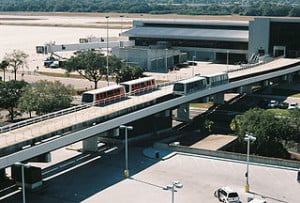![The_Earth_seen_from_Apollo_17[1]](https://alankandel.scienceblog.com/files/2012/11/The_Earth_seen_from_Apollo_171.jpg)
To refresh some reader memories or to inform those who have no prior knowledge of the “Earth Day – 2016: Ideas for a healthier Earth,” Air Quality Matters posting, provided were “ideas” to help in reducing pollutant emissions: 1) while out-and-about when engaged in travel; 2) indoors; 3) around- the home; and finally 4) at work on the job.
Out-and-about and on-the-go
To repeat from the Apr. 1, 2016 Air Quality Matters Earth Day post, I wrote: “Walking and biking instead of driving is an air-pollution-free way to travel. If one does choose to drive, then selecting an automobility device that puts out lower or no emissions, can do much and go far to protect the air we humans breathe. If none of these suits one’s fancy, by taking public transit – especially, the modes that don’t pollute – in so doing, this will go a long ways toward keeping harmful air-polluting emissions in check.”
With this in mind, I am devoting this first Air Quality Awareness Week – 2016 entry to none other than transportation.
I can think of a no better introduction than a public transportation discussion. As it applies and here in the states, I’ve done my best to keep my finger on the transit pulse. At the same time, I can’t help but wonder what the future has in store for this area. Lately, I’ve been doing considerable research and writing on what the prospects might be. There has been so much written on this realm as of late.
The big attention-grabber, in case you have not already guessed is the hypothesis Hyperloop. Granted, development has come quite a ways and there is work under way to build an actual working prototype, one each in El Segundo and Quay Valley (southern Kings County), both in California, but will light at the end of the tunnel ever be seen regarding a functioning full-scale Hyperloop example, model, prototype?

Meanwhile, other efforts not just in the Golden State but elsewhere too include CyberTran, SkyTran™ and VECTORR™ each in various stages of development. I have written about the three of these in my book: “The Departure Track: Railways of Tomorrow,” released in 2013. What all of these have going for them, environmentally sustainability speaking, is that all make use of designs that effectively release no pollutant emissions.
Turning attention elsewhere, in the public transit department, there are many practical examples soon to come online – too many to include a list here, and these comprise both road- and rail-based offerings. An excellent source to consult to learn where significant progress is being made is The Transport Politic, the blog of transportation planner Yonah Freemark.
So, what’s left? Active and automotive transportation. Active includes walking and biking, both pretty much self-explanatory.
On the road, meanwhile, the greatest promise is held in zero-emissions vehicles (ZEVs) and partial zero-emissions vehicles (PZEVs) and others. A great source to learn about the trends in domestic sales of these is the Electric Drive Transportation Association site.
Oh, and I would just like to add that there are new developments regarding the pending VW recall action. Preliminarily, agreement has been reached between the courts and Volkswagen. Spelled out is what course that remediation/mitigation will likely take. A final decision is expected in June. You may read much, much more about this here.

I’d be remiss if I did not provide or identify a source for U.S. public transit ridership (usage) in 2015. A worthy source for this information is from the American Public Transportation Association here.
Finally, the same APTA group has only a few days ago released a statement related to public transit as a “green industry.” That press statement can be viewed here.
The next “Air Quality Awareness Week – 2016: A retrospective, prospective” entries (2 and 3) will have to do with spare-the-air practices in- and outside the home, respectively.
Stay tuned.
Images: NASA (upper); Copyright James G. Howes, 2009 (used with permission), (lower)
– Alan Kandel
This post was last revised on Apr. 4, 2020 @ 7:06 a.m. Pacific Daylight Time.